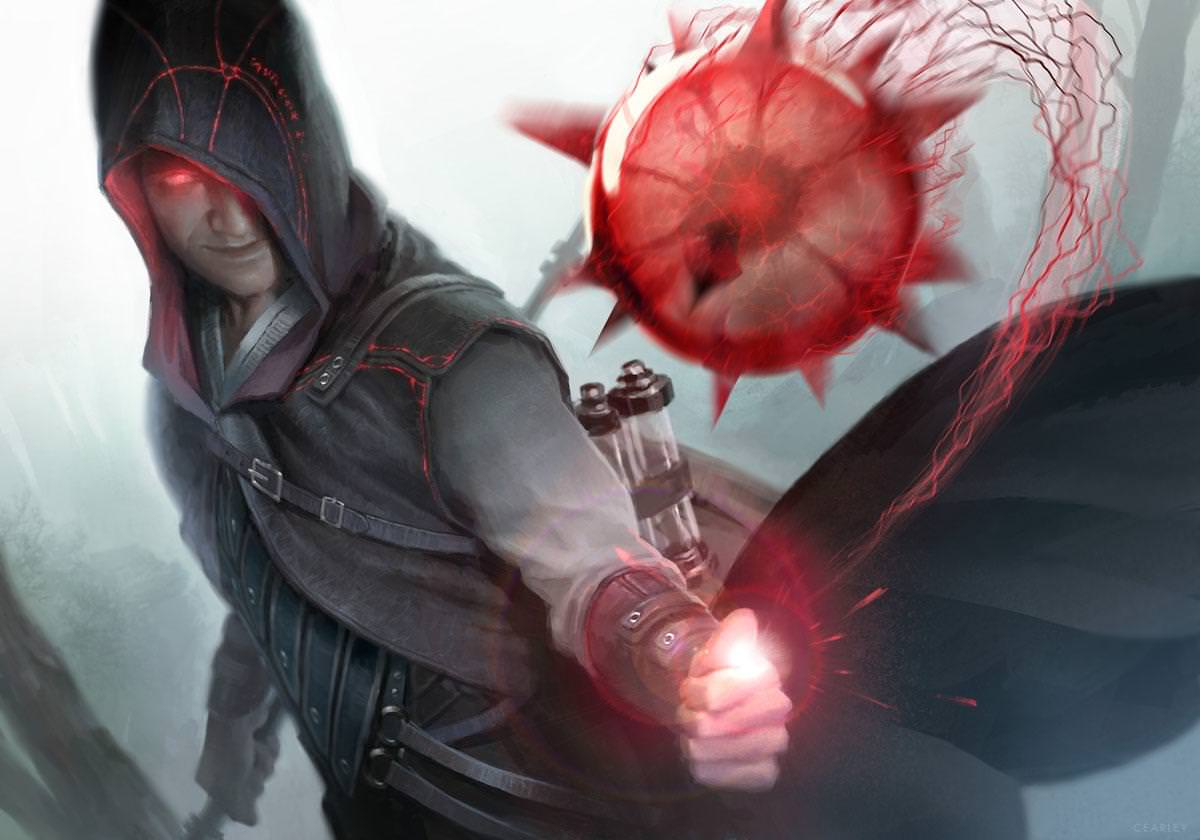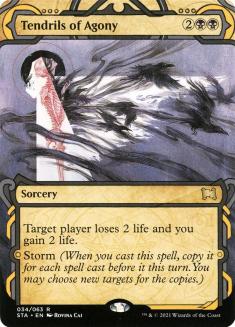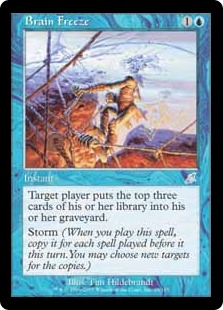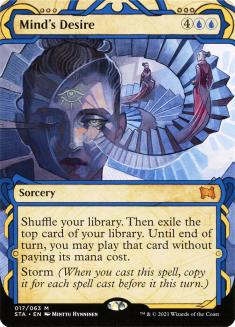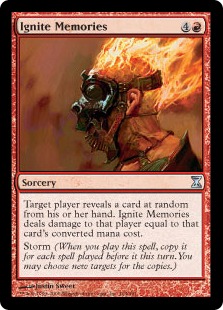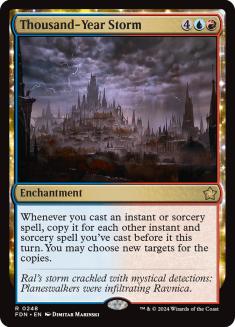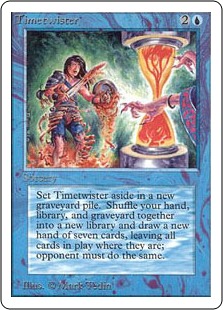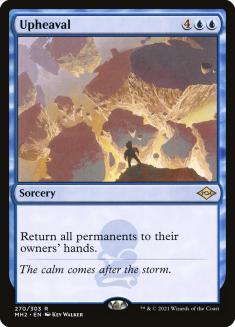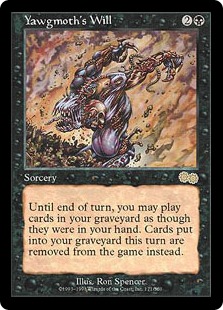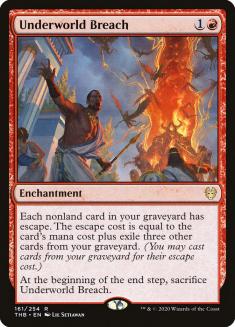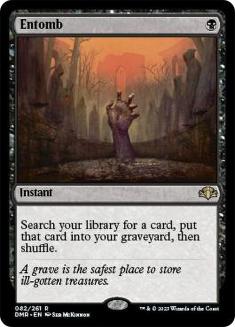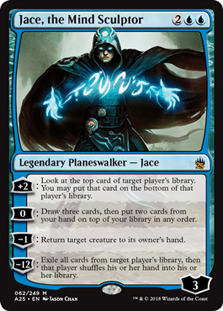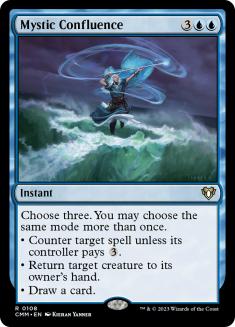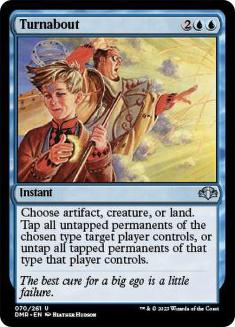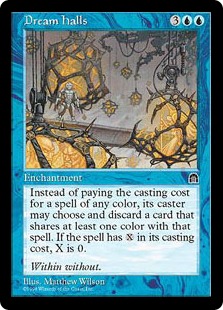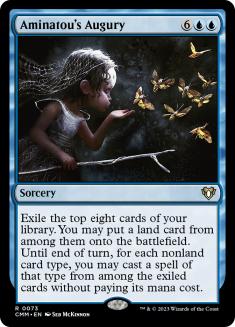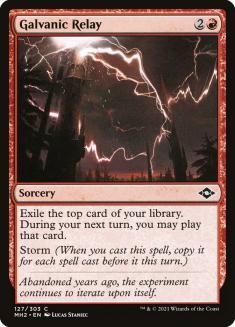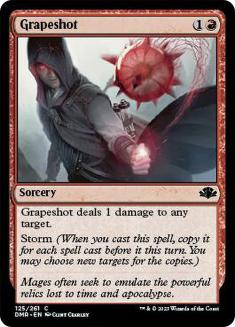Happy Wednesday, gamers, and welcome to the last week of Cubemas! That’s right, there’s just one more week of the current run of Vintage Cube on Magic Online (MTGO). As always, I’ll be sad to see the Cube go, but happy for the time we shared.
In the waning days of the Cube, my decks tend to get progressively weirder as I try more and more to do something that I haven’t done before. As such, it seems very fitting to use this week to do a Deep Dive on Storm, perhaps Cube’s most beloved enigma of an archetype.
A Difficult Archetype
The Storm archetype is difficult to support, difficult to draft, and generally pretty difficult to play. There are some packages that are sort of an easy mode for winning with the deck, but even those can be difficult to wrap your head around if you’re new to the archetype. Some newer cards such as Thousand-Year Storm and more notably Underworld Breach have lead to easier-access wins, but even still the deck is so much different from any other archetype that it deserves some specific attention.
Given that Storm is such a solitaire-style combo deck, that Vintage Cube is currently on MTGO, and that Storm is difficult or impossible to make work in unpowered environments, most of my focus today will be on Storm in Vintage Cube. I have some thoughts on Storm cards in other environments that I’ll save for my section on Cube design today, but generally I’m talking about Storm in the most powerful of Cubes. Let’s get to it!
What Is Storm?
Storm is a combo deck named for the storm mechanic. The whole idea is to cast a bunch of spells on the same turn and try to win the game in short order, typically with Tendrils of Agony or Brain Freeze. While Mind’s Desire doesn’t explicitly win the game, it’s the sort of card that you try to only cast with the intention of doing so.
Win conditions can be a little rocky, though, especially in a 540-card Cube. Ignite Memories is currently in the MTGO Vintage Cube and, uh, it is… unreliable. I much prefer Empty the Warrens, especially now that we’re living in a world with Birgi, God of Storytelling, though admittedly Empty is much worse than the big two (Tendrils and Brain Freeze) as well. Sometimes a Storm deck will win by generating a bunch of mana and casting a big Fireball effect, though this is admittedly very difficult in the current MTGO Vintage Cube without Turnabout present. Thousand-Year Storm plus any burn spell or Collective Brutality is a favorite of mine in the current build.
Storm typically accomplishes this goal using some combination of the broken fast mana that every other deck wants, such as Black Lotus and Moxen, while relying more heavily on cards like Dark Ritual as one-time effects that you really hope nobody else wants. You’ll realistically need some card draw to cast the requisite spells needed to win with a storm spell, which can take the form of draw-sevens like Timetwister, cantrips like Ponder, and ideally Yawgmoth’s Will and Underworld Breach to just cast all of your spells two or more times.
Notably, the spells I’ve named span three colors, and it’s very common to see Storm decks be Grixis, though there are some reasons to go into green in addition to Mono-Blue (High Tide) and Izzet being options if you get the right cards. At any rate, you can already see that successful Storm decks require a lot of things going right in the draft: opening the right cards, wheeling the right cards, and having the appropriate mana to cast them all. You can see why this one isn’t for the faint of heart!
How Should I Approach Drafting Storm?
In a word? Cautiously. Much like I advocated last week with regard to drafting Lands, you really need to draft the cards that other players want highly to make Storm work and hope that the more fiddly things like Rituals come to you late. Broken artifacts and card selection are the sorts of things you look for early while seeing if you might be able to wheel a win condition like Tendrils of Agony. Storm has so little overlap with other archetypes that it’s near-impossible for two Storm drafters to have a good deck at the same table in the MTGO Vintage Cube, so until you start wheeling cards, it’s a very precarious proposition to move in on the deck.
I did a draft last night that I think highlights just how much caution drafting Storm should be approached with. My Pack 1, Pick 1 was realistically between Timetwister and Upheaval. I had the urge to draft Storm and took the Timetwister, but I just didn’t see anything else for a Storm deck. The mana-fixing, other draw spells, and Storm win conditions just weren’t there. Upheaval unsurprisingly didn’t come back around, and I found myself with a deck with a bunch of Signets that really couldn’t capitalize on Timetwister the way it could have with Upheaval.
For as good as a card like Timetwister is in a deck like Storm that prioritizes card draw, it’s just much harder to make work in a way where you’ll be advantaged against your opponent when it resolves than Upheaval and other win conditions. The upshot of what I’m saying here is that for as powerful as Timetwister is, it falls in the range of cards that I’m generally hoping to pick up later than Pick 1.
To put this in a more general and actionable way, you want to pick up cards early that have good jumping-off points in case you don’t wheel any good cards for Storm. In my example, it’s just easier to make use of Upheaval than Timetwister. Your mileage may vary, but that’s absolutely my experience, and the general note about taking cards that are more broadly playable holds even if the specific example doesn’t. If you’re not wheeling the Storm cards, you just can’t build a viable Storm deck.
I encountered the extreme case of this twice yesterday, noticing that I didn’t wheel Ignite Memories, a card that is essentially unplayable. If someone at the table is drafting Ignite Memories, there just isn’t going to be enough support for both of you to end up in Storm. Just like any other draft, you want to pay mind to what is going late while you see if the Storm cards are coming back so that you can move in on what’s actually open.
The more specific a card is for Storm, the later you should try to pick it up, with only the most powerful cards in the deck being exceptions. This pertains to the “easy mode” ways that Storm decks can win. Specifically, Yawgmoth’s Will and Underworld Breach line you up to most reliably win when playing Storm.
Underworld Breach unlocked a version of Storm with Brain Freeze that is by far easier to set up than any previous builds of the deck. If you’ve already drawn Underworld Breach or have some way to get it back from your graveyard, you can just Brain Freeze yourself to stock your graveyard and find Lion’s Eye Diamond, Black Lotus, or whatever other Rituals you have and then either Brain Freeze your opponent quite easily or just win with Thassa’s Oracle if you get all the pieces.
Even still, I’m looking at Demonic Tutor and Preordain early over these cards, just to make sure that I’m able to get all the right mana-fixing lands and support cards to actually draft a Storm deck. I’ll also say that one of the paths of least resistance for Storm is to hybridize some amount of Reanimator with the deck. Entomb is a much better card to grab early than Tendrils of Agony, and if you get the good card selection anyway, there’s a ton of value in having a small package to put a Griselbrand on the table in your Storm deck. Sometimes you’ll just win by Reanimating Griselbrand, and for the games when your opponent can answer it, you should be able to find a Storm win by drawing seven or more cards.
There’s really not a lot else you can hybridize with Storm, unfortunately. A Storm deck can support a couple of planeswalkers like Jace, the Mind Sculptor and Chandra, Torch of Defiance along with some interaction like Mana Drain and Mystic Confluence, though those builds will need a lot more in the ways of playing fair games to win without a full Storm combo than the Reanimator builds.
Maybe the best way to put it is that you don’t draft Storm; Storm drafts you. The best Storm decks have fast wins that are very difficult to interact with, but weaker Storm decks often struggle to beat anything. It’s an archetype that is best moved in on once you can see that it’s open rather than forced. Unlike Mono-Red Aggro, you’re not just looking for any creature with power and toughness. You’re looking for a ton of very specific stuff, even if there is some interchangeability in how it comes together.
How Fun Is Storm?
Storm is one of those decks that reinforces the idea that fun is zero-sum. There are opportunities for some back-and-forth games with Storm against countermagic, though largely the Storm player is either taking all the game actions or doing about nothing. Frankly, I’ve gotten bored more than once going through the motions playing Storm. The deck is honestly more fun to draft than it is to actually play a lot of the time. Some Limited fans generally feel this way about any game of Magic, but as a person who generally prefers actually playing the games, that assessment means something coming from me.
Storm is a unique experience as far as drafting or even playing Constructed Magic, though, and there’s a reason that I always try to draft it at least a few times while Vintage Cube is live. I’m going to date myself by saying that Iggy Pop is one of the first Legacy decks that really got me hooked on Magic just by knowing it existed. The games are just wild, and it’s an itch that I like to scratch now and again.
Storm is more of a “sometimes food” than a Cube staple, and while I love having it around in Vintage Cube, I doubt that I’d feature Storm support if I got the opportunity to iterate Grixis Cube for another MTGO run. My work on Twoberts has generated tons of games where I’ve found that players operating on the same axes are just far more enjoyable for me. I have a soft spot in my heart for Storm, but it’s not for everyone, and it’s not even for me all the time.
How Do I Support Storm as a Cube Designer?
Storm, more than almost any archetype, requires a ton of redundancy. You need to feature a lot of ways to make extra mana, a lot of good card selection, and a handful of different win conditions to ever see a Storm deck win a game. The current MTGO Cube is shy at least on Turnabout and Empty the Warrens to get the archetype where it realistically aught to be at minimum for a 540-card environment.
There are a couple of cards that I featured in Grixis Cube that would also help to make Storm-style decks more reliable to draft. Big spells to cast and/or win conditions as well as broken mana engines are really important, so a little more in that department would be great. Dream Halls is still one of the most broken mana engines there is, Aminatou’s Augury is a big spell that I find is awesome with the general Storm package and/or to cheat out an Emrakul or a Griselbrand, and Sentinel’s Tower is another Thousand-Year Storm-adjacent card as a potential win condition just to make sure one shows up more often. I’m the biggest proponent of Aminatou’s Augury in this lot just because it’s really fun to cast and doesn’t only work in Storm, but I like all of these cards in environments supporting Storm.
Lastly, there is some room for Storm in lower-powered environments. You want to be careful, though, because there’s just less that makes Tendrils of Agony work as you move away from powered Cube and cards like Dark Ritual will either be used to power out cards that are silly to accelerate into or just not fit in many decks. For the most part, I think cards like Empty the Warrens, Galvanic Relay, and Grapeshot can be cute additions to things like Pauper and Peasant Cube.
The idea is that, without stuff like draw-sevens, Rituals, Yawgmoth’s Will, and the like, you won’t be able to win outright with these cards, but you will be able to have some pretty cool turns. Stuff like Cloud of Faeries untapping bouncelands and utilizing suspend to increase storm count can make for some pretty cool games in these environments without being unbeatable or causing one player to monopolize the game actions for ten minutes. Manamorphose is of course a favorite of mine as a free spell that replaces itself. This is more “spells matter” support than actual Storm, but that’s much more appropriate for these Cubes anyway.
Storm has been a fascination of mine for nearly as long as I’ve played Magic, and I imagine it will always be something that I want to draft now and again. That said, it’s not a great fit for a lot of environments, it eats up a lot of card slots when designing a Cube, and it can be among the most boring styles of decks to play against. I say to approach it with caution, but to approach it all the same.

